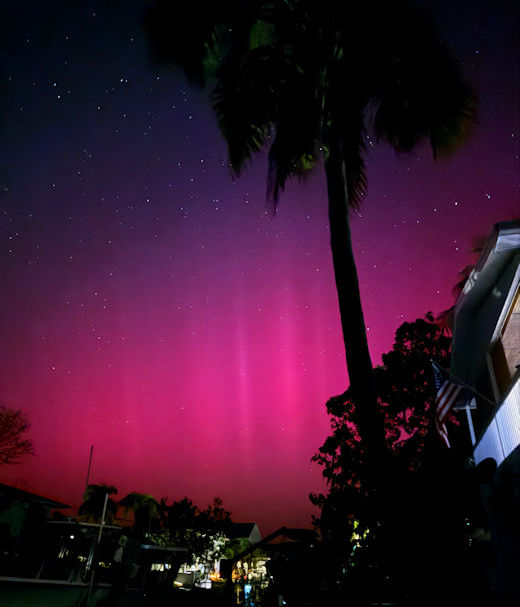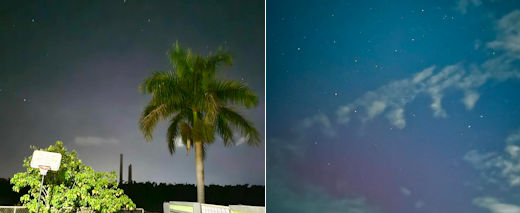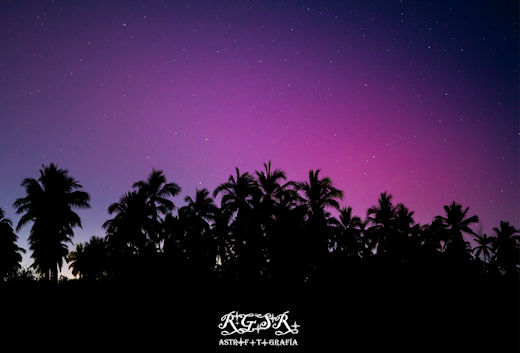This is an AI Free Zone! Text created by Large Language Models is
spreading rapidly across the Internet. It's well-written, artificial,
frequently inaccurate. If you find a mistake on Spaceweather.com, rest
assured it was made by a real human being.
|
|
|
THE STORM IS OVER, BUT...
This weekend's extreme geomagnetic storm is over, but there might be a
last gasp. NOAA forecasters are currently predicting a return to severe (G4) conditions on May 12th when one or more CMEs might hit Earth's magnetic field. Of particular interest is the CME from yesterday's X5.8-class flare -- a potent storm cloud that could spark renewed auroras if its internal magnetic field is oriented correctly. CME impact alerts: SMS Text
AURORAS IN FLORIDA, PUERTO RICO, MEXICO:
Many people around the world have just seen auroras for the first time
in their lives. This includes residents of the Florida Keys. Ron
Jarrell sends this photo from Big Pine Key at latitude 24.7° N:

"The auroras were so beautiful!" says Jarrell, who needed no more than his smartphone to photograph the display.
Seeing auroras in the Florida
Keys is extraordinary, but the light show didn't stop there. Sky
watchers saw the sky turn red across the Carribean. These pictures were
taken from the southeast coast of Puerto Rico at latitude 18.1° N:

Photo credits: (left) Carlos Rolling of Hormigueros; (right) Adriel Jarell of Cabo Rojo
"The last events on record
when auroras were seen from Puerto Rico were in 1859 and 1921, so
tonight was an historic event", says Eddie Irizarry from the Sociedad de
Astronomia del Caribe (Astronomical Society of the Caribbean).
Auroras also appeared in
Mexico. René Saade photographed the display looking north from the beach
in Mazatlan, Sinaloa at latitude 23.2° N:

"This is not something you see every day--auroras and palm trees," says Saade. "Amazing!"
The low latitude of these sightings would seem to place this storm among the greatest aurora displays
of the past 500 years. Stay tuned for more information on this topic
when the storm is finally over a few days from now. Meanwhile sign up for aurora alerts!
Readers, did you photograph the auroras at low latitudes? Please submit your photos here.






No comments:
Post a Comment